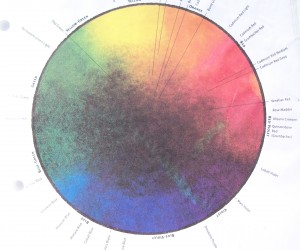
To make sure your art will last as long as it possibly can without fading, it is imperative that you understand the permanence and the lightfastness of the colors used in your artwork.
More than likely, this blog post is for the less experienced wannabee artist rather than the prolific professional who through education and practice has already studied, succeeded and at times failed in the use of most all colors and media. However, it is important enough to discuss.
Lightfastness: It is important that your artwork resist fading in direct sunlight. There are colors and certain media that fare better at this than others. Using pigments with good permanence ratings can help your artwork from growing faint. Needless to say, it helps if you keep it away from the damaging rays of the sun.

Colors fade because the suns ultraviolet light breaks down the chain-like color molecules. Oxygen attaches to the molecular fragments creating new molecules that no longer have the same color absorption properties. (That was a mouthful! I’ll try to be simpler.)
Why are ASTM ratings important?
ASTM: American Society for Test Materials.
- Class I: Very lightfast
- Class V: Very fugitive (quick to disappear)
For example, consider Alizarin crimson, which is a very popular pigment with many artists. This color has a rating of III or IV and a permanent rate (PR) of 83. This means that it will eventually fade in the damaging UV rays of direct sunlight. As a substitute, I recommend you consider a quinacridone family with a PR in the 200s, or you may want to experiment with other colors to see which works best for you; such as, the pyrole and perylene families. In oil paints, the Windsor red is the same or similar to Pyrole red.
- Assume paints without ASTM ratings to not be lightfast.
- Buy paints with ASTM ratings of I or II.
Here is a classroom experiment you may wish to try:
- Paint swatches using similar selected colors with different ASTM and PR ratings.
- Cut them in half.
- Place one half of each in direct sunlight.
- Place one half of each in a dark drawer.
- After six months compare the lightfastness of the colors.
